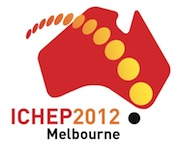Speaker
Dr
Mimmo Della Volpe
(Università "Federico II" di Napoli & INFN (IT))
Description
In the coming years, the LHC complex will be upgraded to extend the physics potential of the experiments. The average luminosity will be increased by a factor 5 to 10 above the original design one. The planned upgrades require, among other detector and DAQ system improvements, a significant higher selectivity of the trigger system, to cope with the increased radiation level and particle rates. In this paper we describe the changes to the ATLAS detector and its trigger system currently under study. The calorimetry--‐based trigger detectors will improve their selectivity by benefiting from the increased granularity available at the trigger level, which will allow for a higher energy resolution. In the muon detector, the momentum resolution of the trigger can be improved by using the precision muon tracking detectors, the Monitored Drift Tuber chambers (MDT). An MDT--‐based trigger scheme has been developed and validated, based on new radiation--‐hard readout chips currently under development. The use of the inner tracking system in the lower levels of the trigger selection is also discussed. While the second level trigger will be helped by a new fast tracking system, the addition of tracking information at the first level trigger during the last phase of the LHC upgrade is currently under discussion. Different scenarios are compared, having in mind the requirements to achieve the expected physics potential of ATLAS in this high luminosity regime.
Summary
A new Level 1 muon trigger system based on the Monitiored Drift Tube (MDT) precision tracking chambers is under development for high-luminosity upgrades of the ATLAS muon spectrometer together with new MDT chamber readout electronics with higher bandwidth and better radaition hardness.
Authors
Enrico Pasqualucci
(Universita e INFN, Roma I (IT))
Hubert Kroha
(Max-Planck-Institut fuer Physik (Werner-Heisenberg-Institut) (D)
Dr
Mimmo Della Volpe
(Università "Federico II" di Napoli & INFN (IT))
Co-authors
Dr
Oliver Kortner
(Max-Planck-Institut fuer Physik, Munich, Germany)
Mr
Philipp Schwegler
(Max-Planck-Institut fuer Physik, Munich, Germany)
Dr
Robert Richter
(Max-Planck-Institut fuer Physik, Munich, Germany)
